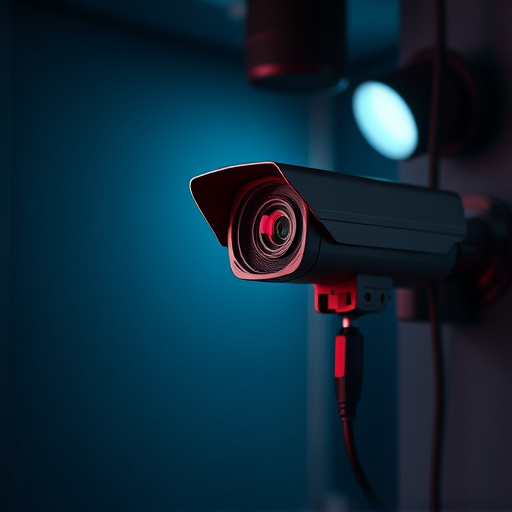Hidden microphones and spy cameras have evolved into versatile tools for discreet surveillance, offering both law enforcement and private individuals ways to gather evidence or protect themselves. These tiny devices can be concealed in everyday objects, enabling strategic audio capture without raising suspicion. While their legality and ethics are debated due to potential privacy breaches, advanced detection techniques and security measures help mitigate unauthorized surveillance risks.
Hidden microphones, often disguised as everyday objects, represent a discreet yet powerful technology. This article delves into the intricate world of spy cameras and their integration with microphones, exploring how these devices operate in secret. We’ll uncover common types, their applications, and the critical security measures needed to detect them. Additionally, we’ll discuss legal implications and ethical considerations surrounding hidden microphones, providing a comprehensive understanding of this sensitive topic.
Understanding Hidden Microphones: A Discreet Technology
Hidden microphones, also known as covert or secret listening devices, are a fascinating piece of technology that allows for discreet surveillance. These tiny gadgets can be easily concealed in everyday objects, transforming them into spy cameras and microphones capable of capturing audio and video without raising suspicion. From small buttons to pen-shaped devices, their design is often so subtle that they go unnoticed by the average person.
This technology has gained popularity not only among law enforcement agencies for investigative purposes but also for personal use, as people look for ways to protect themselves or gather evidence. The ability to record conversations or monitor activities secretly has sparked debates about privacy and ethical considerations. Nonetheless, hidden microphones offer a unique solution for situations where traditional recording methods are impractical or illegal.
Spy Cameras and Their Role in Microphone Placement
Spy cameras have evolved far beyond their initial purpose, becoming versatile tools that can facilitate strategic microphone placement. These discreet devices offer a range of options for capturing audio secretly, making them popular choices for surveillance and security purposes. By integrating tiny microphones into spy cameras, users can record conversations, gather intelligence, or monitor activities without raising suspicion.
The integration of spy cameras and microphones opens up new possibilities in covert listening. Whether it’s a small, invisible camera hidden in a book or a sophisticated wireless microphone disguised as everyday objects, these devices enable users to access audio information that would otherwise remain unheard. This technology is valuable for various scenarios, from private investigators gathering evidence to law enforcement conducting operations, ensuring every sound is captured and analyzed for crucial insights.
Common Types of Hidden Microphones and Their Applications
Hidden microphones, often integrated with spy cameras, come in various forms, each designed for specific applications. One common type is the magnetic microphone, which attaches discreetly to metal surfaces and is ideal for surveillance in cars or offices. These devices can capture clear audio even at a distance, making them popular choices for security and investigative purposes.
Another popular option is the hidden camera and microphone combo, compact enough to be concealed in everyday objects like clocks, pens, or even buttons. These versatile gadgets are perfect for long-term surveillance, allowing users to gather evidence discreetly. Their small size also makes them suitable for covert operations, where a minimal presence is crucial.
Detecting and Countering Hidden Microphones: Security Measures
Detecting hidden microphones, often referred to as spy cameras and microphones, has become a critical aspect of modern security measures. With advanced technology making it easier than ever to conceal recording devices, professionals must stay ahead of potential threats. One effective method is utilizing specialized equipment designed to detect electromagnetic signals emitted by these hidden devices. This technology can pinpoint the location of covert microphones, helping authorities and security personnel take appropriate actions.
Additionally, countermeasures such as signal jamming can be employed to disrupt the transmission of audio data from hidden microphones. Security experts also advocate for regular physical inspections and thorough searches in high-risk areas to identify and neutralize these devices. By combining advanced detection techniques with proactive security protocols, organizations can significantly reduce the risk of unauthorized surveillance, ensuring privacy and confidentiality in sensitive environments.
Legal Implications and Ethical Considerations of Hidden Microphones
The use of hidden microphones, or spy cameras and microphones, raises significant legal and ethical concerns. In many jurisdictions, wiretapping laws strictly regulate the use of such devices, with severe penalties for unauthorized installation and recording. The legality varies by region, but generally, it’s illegal to secretly record conversations without the consent of all parties involved. This is especially true in private settings, as people have a reasonable expectation of privacy.
From an ethical standpoint, hidden microphones invade personal privacy, potentially leading to abuse or misuse of recorded information. They can be used for malicious purposes, such as stalking, harassment, or corporate espionage. Moreover, the emotional and psychological impact on individuals whose conversations are surreptitiously recorded can be profound, leading to feelings of distrust and insecurity in relationships and professional settings alike.
